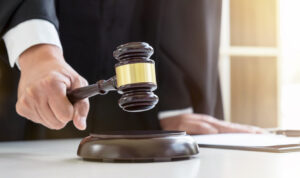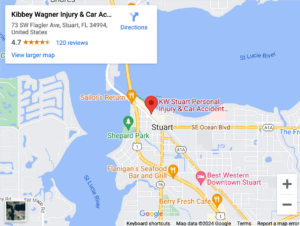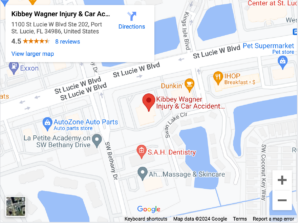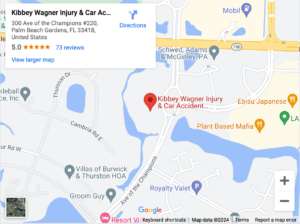
When you submit a personal injury claim, you need evidence that the other party was negligent. Specifically, you must have evidence the accident caused your injuries. You even need evidence proving how much your medical treatment cost you.
Lawyers do not always explain what they mean by “evidence.” And the evidentiary standards used by insurance adjusters do not match the Florida Evidence Code used in court. As a result, you might not understand what your lawyer needs from you to prove your case.
Definitions of Evidence
Evidence includes anything that tends to prove or disprove a fact. Under this definition, evidence covers witness testimony, documents, and physical objects.
Some examples of evidence include:
- Testimony from someone who saw a car accident happen
- Testimony from an expert who used scientific techniques to reconstruct the crash
- Accident/police reports related to the incident
- Medical records describing your injuries after the crash
- Photos of your windshield showing where your head impacted the glass
- The seat belt anchor that broke during the collision
The fact-finder, typically a jury, uses evidence to determine what happened. As a result, the parties in a lawsuit will present conflicting evidence.
In a civil lawsuit, accident victims must prove their claims by a preponderance of the evidence. This standard means that it is more likely than not that their version of the accident happened. To reach this conclusion, the jury must look at the evidence presented by both sides.
Admissibility of Evidence
A judge determines the admissibility of your evidence before the jury can consider it. If you have ever seen a courtroom drama, you have seen lawyers yell “objection” as evidence gets presented. If the judge sustains the objection, the evidence doesn’t come in. When a judge overrules the objection, the evidence stays in.
Some types of evidence are easy to analyze. Judges must throw out almost all types of hearsay, except those authorized by the rules of evidence. Similarly, the jury cannot hear about any admissions made during settlement negotiations. These types of evidence usually have some issue that makes them inadmissible in almost all situations.
But other types of evidence are more difficult to analyze. Since no rule specifically excludes these types of evidence, the court must make a judgment call on whether the evidence can go before the jury.
In analyzing whether the jury can see a piece of evidence, the judge will look at:
Relevance of the Evidence
Evidence must relate logically to an issue in the case. You might want the jury to know about the other driver’s history of speeding tickets. But if you claim the other driver caused your rear-end crash by tailgating, those speeding tickets might not be relevant to prove any facts in your case.
Reliability of the Evidence
Judges will look at the reliability of evidence before admitting it. Evidence might be unreliable if:
- Someone could have tampered with it
- The other driver’s experts cannot repeat the results your expert produced
- You do not know its source
Unreliable evidence can mislead a jury and will usually get thrown out.
Probative Value of the Evidence
The evidence must help a jury decide a fact in your case. Evidence could be relevant without having probative value.
For example, suppose that you want to prove your landlord caused your slip and fall accident. You can probably introduce evidence that the landlord knew the roof leaked onto the stairs and that the handrail was broken. This evidence would be relevant and have probative value to prove your fall resulted from the landlord’s lack of care.
You might also have relevant evidence that the landlord knew of other unrepaired hazards in the building, like shoddy wiring. This would tend to show the landlord did not care about tenant safety. But a judge might determine this evidence does not have probative value in your case since you were not electrocuted.
Prejudicial Effect of the Evidence
Judges can also throw out evidence that might inflame jurors against a party instead of helping them decide the facts. For example, a judge might stop you from introducing evidence in your bicycle accident case that the other driver hit and killed a child in a prior bicycle accident.
Even though this fact might prove the driver’s history of recklessness around cyclists, it could also prevent the jurors from looking at the case objectively. A judge might compromise by allowing evidence of the prior bicycle accident without saying anything about the victim’s death.
Evidence in an Insurance Claim
Insurers do not follow the rules of evidence. Instead, an adjuster will look at anything relevant to the case. As a result, your lawyer will have greater flexibility in providing documents with your claim.
The Role of Your Lawyer
Lawyers gather admissible evidence to support your claim. They need to be prepared with all the evidence they may need in court in case the insurer refuses to settle. To discuss your claim and the evidence you need to support it, contact us online Kibbey Wagner Injury & Car Accident Lawyers, or call (772) 444-7000 for a free case review.



